
| The world has expressed increasing concerns as North Korea steps up its missile program and tensions mount on the Peninsula. Three generations of North Korean leadership have pushed for the expansion of its missile program ever since the country imported FROG-class missiles from the Soviet Union in the 1960s. |
| 1984 | North Korea produces first prototypes of the R-17E (Scud-B variant), which are named "Hwasong-5." Joseph Bermudez cites interview data in 1999 that claims there were three successful and three failed missile tests in April and September 1984. Source: Nuclear Treat Initiative (NTI) |
| 1990/06 | North Korea conducts its first successful test of a Scud-C(Hwasong-6), launched from the Musudan‐ri missile test site in Hwadae-kun, North Hamgyong Province, over the Sea of Japan. Source: NTI |
| 1991/07 | According to the head of South Korea's Agency for National Security Planning, So Dong Kwon, North Korea successfully tested a mobile Scud-C (Hwasong-6) missile, with a range of 500 kilometers, from a Korean Peoples' Army (KPA) base in Kangwon Province on the east coast of North Korea. Source: NTI |
| 1992/06 | According to unnamed military sources in Tokyo quoted by the Japanese daily Sankei Shimbun, North Korea conducted an unsuccessful test of the Nodong-1 missile. However, the test may have actually been cancelled. Source: NTI |
| 1993/05/29 | North Korea successfully launched four missiles from the Musudan-ri test facility in Hwadae-kun, North Hamgyong Province, two of which are thought to be Nodong-1 missiles. The missiles were reportedly fired in the direction of the Japanese Noto Peninsula at target buoys in the Sea of Japan. One missile traveled 500 kilometers; another traveled 100 kilometers; the remaining two fell short of 100 kilometers. Source: NTI |
| 1994/05/31 | According to US and Japanese intelligence sources, North Korea tested a new anti-ship missile (ASM) from Wonsan Harbor on North Korea's east coast. The missile has been modified to extend its range from about 85 kilometers to 160 kilometers and was launched at a barge in the Sea of Japan, but missed the target. Japan Defense Agency and Foreign Ministry officials indicate that the missile was an upgraded Silkworm (HY-2) missile. Source: NTI |
| 1994/06/02 | North Korea test-fired a second upgraded version of the Chinese Silkworm anti-ship missile (ASM) over the Sea of Japan. A senior Pentagon official confirmed the test. Source: NTI |
| 1995/03/30- 1995/03/31 | According to Japan's Chief Cabinet Secretary Igarashi Kozo, North Korea tested "Chinese-made" Silkworm anti-ship missiles (ASMs) on the Sea of Japan. Source: NTI |
| 1997/05/23 | North Korea tested its new AG-1 anti-ship cruise missile. Pentagon sources described the missile as using "unimpressive, old technology" from Russian Styx and Chinese Silkworm cruise missiles. Source: NTI |
| 1998/08/31 | North Korea launched the first man-made satellite Kwangmyongsong-1, which it said was successful. But the United States and South Korea said what North Korea had fired was an intermediate-range Taepodong-1 ballistic missile, part of which flew over Japan and into the Pacific Ocean. Source: Xinhua |
| 2003/02/24 | North Korea launched a missile into the sea between the Korean Peninsula and Japan, South Korea's Defense Ministry said. The cruise missile was classified as either a Seersucker or a KN-01, which is a North Korean enhanced version of the Seersucker with an approximate range of 200 kilometers. Source: NTI |
| 2003/10/20 | South Korea confirmed a Japanese media report that North Korea had test-fired a ground-to-ship missile in the day, but downplayed it as part of routine training. Both the Defense Ministry and Joint Chiefs of Staff (JSC) confirmed that North Korea test-fired an unidentified type of surface-to-ship missile from its northeast coast. Source: Xinhua |
| 2006/03/08 | North Korea was reported to have test-fired two short-range missiles within its borders. The missiles were launched toward China, the Japanese news media first reported, citing unidentified defense officials. American officials in Washington confirmed the reports. Source: New York Times |
| 2006/07/04- 2006/07/05 | North Korea launched several ballistic missiles, including an advanced long-range Taepodong-2 missile. But the launch of the Taopodong-2 was an apparent failure, and the missile landed in the Sea of Japan. Source: Xinhua |
| 2007/05/25 | At about 9 am local time, North Korea test-fired one short-range, anti-ship cruise missile off of the east coast of the country. The missile was fired from a military base in South Hamgyong Province, into the Sea of Japan. Joseph Bermudez of Jane's Defence Weekly hypothesizes that, based on its range, the missile was either a "Seersucker" CSSC-3, or an enhanced version of the "Seersucker" known as the KN-01. The KN-01 has an estimated range of up to 200 kilometers. Source: NTI |
| 2007/06/27 | North Korea launched three short-range ballistic missiles off the east coast of the country, into the East Sea. According to Japanese intelligence sources, the three missiles were KN-02 short-range, anti-ship missiles. Source: NTI |
| 2008/03/28 | According to Yonhap News Agency in South Korea, North Korea test-fired three short-range missiles off of its west coast. Source: NTI |
| 2008/05/30 | According to Yonhap, North Korea test-fired three short-range missiles into the West Sea. The missiles were believed to be short-range Styx missiles, made from Soviet technology, which have a range of 45 kilometers. Yonhap reported that two of the three missiles misfired during the test. Source: NTI |
| 2009/04/05 | North Korea launched a rocket at 11:30 am local time, which was confirmed by the US, Japan and South Korea. "Stage one of the missile fell into the Sea of Japan. The remaining stages along with the payload itself landed in the Pacific Ocean," the North American Aerospace Defense Command said, adding "No object entered orbit and no debris fell on Japan." Source: Xinhua |
| 2009/07 | North Korea fired seven short-range missiles off its east coast from a base near Wonsan, Gangwon Province in the morning. All the seven missiles are estimated to have a range of 400 to 500 kilometers. Source: Xinhua |
| 2012/04/13 | North Korea launched a rocket carrying the Kwangmyongsong-3 satellite at 7:38 am local time from the Sohae Satellite Launching Station in Cholsan county, North Pyongan Province. "The earth observation satellite failed to enter its preset orbit," North Korean official KCNA news agency reported. Source: Xinhua Reactions: Japan's defense ministry said the country has suffered "no impact of falling objects" from the launch and urged the public to stay calm. China urged all sides to remain calm after Pyongyang's failed rocket launch. The UN Security Council issued a statement that "strongly condemns" North Korea's "serious violation" of UN sanctions with the rocket launch, urged tightening of existing UN sanctions and warned of further action if Pyongyang conducts another nuclear test. The Group of Eight (G8) Foreign Ministers condemned the rocket launch by North Korea. The White House said that the reported rocket launch by North Korea threatened regional security and violated international law. |
| 2012/12/12 | North Korea successfully put a second version of the satellite Kwangmyongsong-3 into orbit using the Unha-3 carrier rocket, defying calls from the international community to drop the launch plan, which was widely believed to be a covert test of long-range missile technology. Source: Xinhua Reactions: China expressed concern over North Korea’s satellite launch plan, and hoped relevant parties would do more conducive to the stability of the Korean Peninsula. Japanese Prime Minister Yoshihiko Noda had ordered the country's ministries to take every possible measure to maintain public security, adding he will seek cooperation with the US, South Korea, Russia and China to stop North Korea's launch plan. US State Department spokeswoman Victoria Nuland said in a written statement that "A North Korean 'satellite' launch would be a highly provocative act that threatens peace and security in the region…Any North Korean launch using ballistic missile technology is in direct violation of UN Security Council Resolutions (UNSCRs) 1718 and 1874." South Korea expressed deep concern over the issue and demanded North Korea withdraw its launch plan. The UN Security Council condemned the rocket launch announced by North Korea, calling the move "a clear violation" of relevant council resolutions. |
| 2012/03/15 | The South Korean news agency says that North Korea has conducted a pair of short-range missile tests, amid rising tensions on the Korean Peninsula. Reactions: The US Defense Secretary, Chuck Hagel, has announced a plan to bolster the country’s missile defenses in Alaska and California. |
| 2013/05/18- 2013/05/20 | South Korea’s Defense Ministry confirmed that North Korea launched three short-range guided missiles on May 19. It said the missiles were fired in a north-easterly direction away from South Korean waters. South Korea’s defense ministry estimated that the launched missiles had a range of 120 kilometers and could possibly be KN-02 surface-to-surface missile. Later on the same day, North Korea fired another short-range missile into the East Sea, Yonhap News Agency said quoting an anonymous Seoul military official. On May 20, North Korea fired one more KN-02 into the Sea of Japan, local media reported. Source: CNTV/Xinhua Reactions: UN Secretary-General Ban Ki-moon is ready to "help facilitate the process of peace and trust-building on the Korean Peninsula" to avoid "miscalculation and dangerous escalation," UN spokesman Martin Nesirky said. South Korea's President Park Geun-hye's top security advisor, Kim Jang-soo, urged Pyongyang to desist from any more drills. |
| 2014/02/27 | North Korea test-fired four short-range missiles into the sea, Seoul's defense ministry said, in an apparent show of force to coincide with South Korea-US joint military exercises. A ministry spokesman said the missiles, with an estimated range of 200 kilometers, were fired off the east coast of North Korea. Source: AFP Reactions: South Korea's Defense Ministry said that the missile launch by the North Korea can be seen as "intended provocation." China called on all parties to ease tensions in the Korean Peninsula after North Korea reportedly fired four short-range missiles. |
| 2014/03/03- 2014/03/04 | North Korea fired off two short-range ballistic missiles, believed to be Scud-Cs, in 10 minutes from 6:19 am local time on May 3 at Gitaeryeong and Wonsan areas on the North Korean southeast coast. On May 4, North Korea fired seven rockets from multiple launchers into the sea, in an apparent show of force to coincide with South Korea-US joint military exercises, South Korean officials said. North Korea claimed that its short-range missile launches were "successful normal training within its own territory," the official KCNA news agency reported. Source: Xinhua/AFP Reactions: South Korea called the missile launches a "reckless provocation". China's foreign ministry spokesman Qin Gang called on all sides to avoid any further escalation of tensions at a press conference. The US demanded the North show restraint. “UN Security Council resolutions prohibit North Korea "from launching any ballistic missiles, and this includes any Scud missiles," Pentagon spokesman Colonel Steven Warren said. |
| 2014/03/16 | North Korea fired off a total of 25 short-range missiles toward eastern waters, local media reported citing the Joint Chiefs of Staff. North Korea launched 10 projectiles in 10 minutes from 6:20 pm local time, before firing off eight projectiles in five minutes from 8:03 pm and seven more projectiles in four minutes from 9: 28 pm, according to the Joint Chiefs of Staff. Those projectiles were believed to be short-range missiles, possibly the FROG surface-to-surface missiles, as they have a range of around 70 kilometers, according to military officials. Source: Xinhua Reactions: UN Secretary-General Ban Ki-moon voiced his concern that the latest missile launch by North Korea "will lead to increased tension in the region." The South Korean spokesman urged Pyongyang to refrain from raising military tensions any more, saying that the military has strengthened surveillance toward possibly additional missile launches. China hopes relevant sides will do more things conducive to reducing tension so as to jointly maintain peace and stability on the Korean peninsula, a foreign ministry spokesman said. |
| 2014/03/23 | North Korea fired off a total of 30 short-range missiles amid the continued joint military exercises between South Korea and the US. North Korea launched 30 short-range rockets, possibly the FROG surface-to-surface missiles, from 4 am to 6:10 am local time, according to the Joint Chiefs of Staff cited by local media. Those rockets, which flew around 60 kilometers, were fired from Wonsan areas in the North Korea's southeastern coast toward the eastern open waters. Source: Xinhua Reactions: South Korea's Unification Ministry said that it will not lift the so-called May 24 sanctions against North Korea until Pyongyang takes responsible actions for the sinking of a South Korean warship four years ago. |
| 2014/03/26 | North Korea fired off two medium-range ballistic missiles, South Korea's Defense Ministry said. Defense Ministry spokesman Kim Min-seok told an emergency press briefing that North Korea launched two ballistic missiles, believed to be of the Rodong class, from 2:35 am to 2:42 am local time from the Sukcheon region, north of Pyongyang, toward waters off the eastern coast. The missiles, which flew around 650 kilometers, were launched for the first time in around five years. Source: Xinhua Reactions: Russia said it was concerned about the renewed tension on the Korean Peninsula. Japan suggested it may begin to ease unilateral sanctions against North Korea if positive steps are taken to resolve a decades-old abduction issue. China expressed concern about the rise of tension on the Korean Peninsula. South Korea denounced the North Korea’s launch of two medium-range ballistic missiles as provocation. UN Secretary-General Ban Ki-moon voiced his increasing concerns about reported new launches of ballistic missiles by North Korea, saying that "such launches are contrary to building trust in the region." |
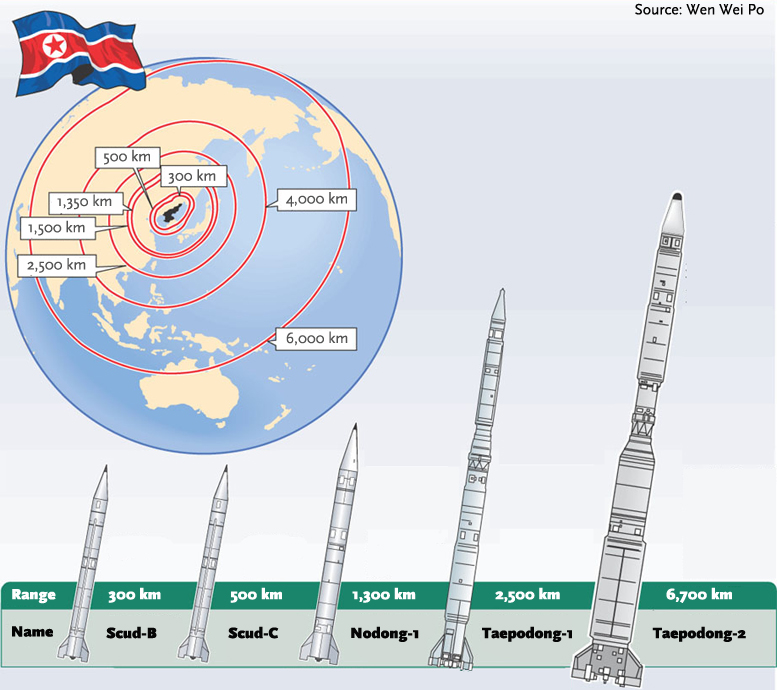
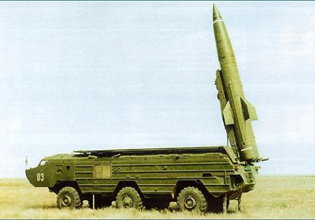 |
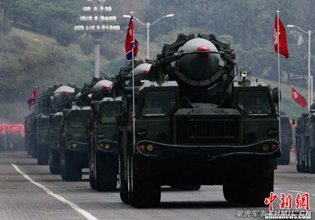 |
Missile name: KN-02; Range: 120 km |
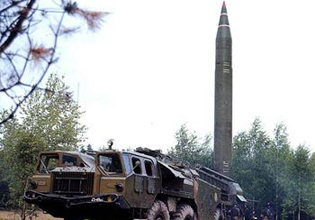 |
Missile name: Hwasong-5; Range: 300 km |
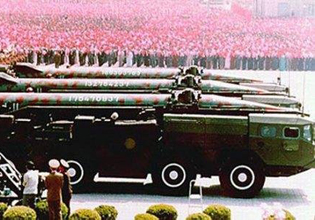 |
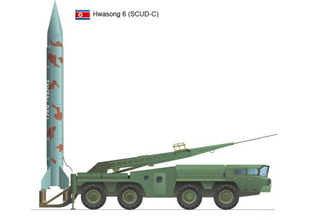 |
Missile name: Hwasong-6; Range: 500 km |
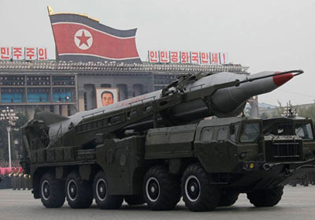 |
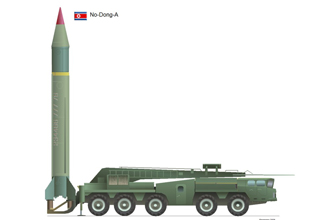 |
Missile name: Nodong-1; Range: 1,000 km |
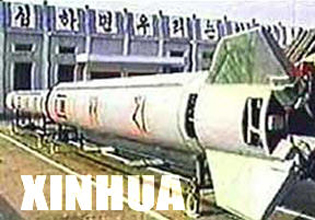 |
Missile name: Taepodong-1; Range: 2,200 km |
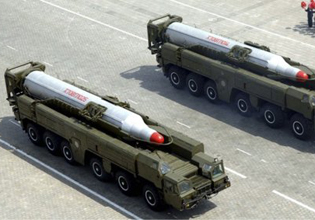 |
Missile name: Musudan; Range: 3,000- 4,000km |
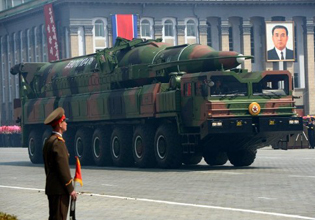 |
Missile name: Taepodong-2; Range: 6,700km |
Source: Agencies |